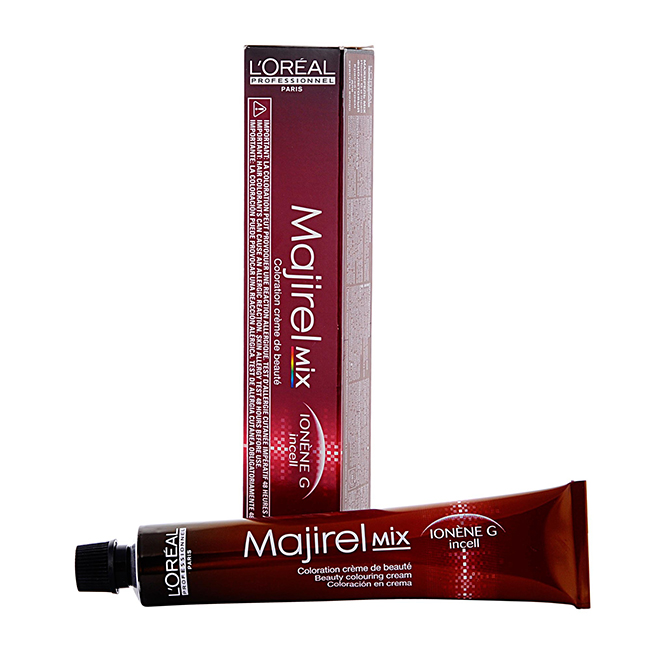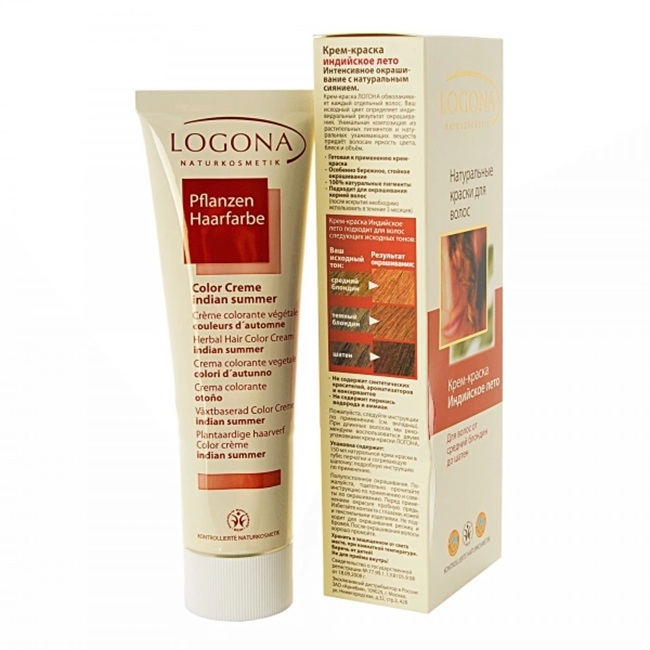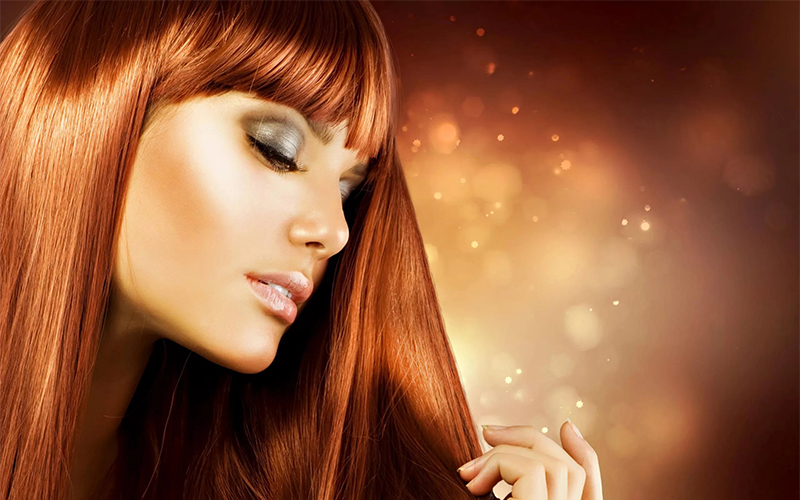Not only women, but also men resort to hair coloring. Different reasons induce them to this: someone does not like his natural color, someone wants to get rid of gray hair that has appeared, and someone self-expressing himself in such a way, constantly repainting curls. To change the image of the dye will be very useful and inexpensive means. You do not need to go to the table to a plastic surgeon, you just need to become from a blond, for example, a brunette, and here we have a completely different person. Especially often this technique is used by adolescents who want to stand out from the crowd. However, few people know that it is necessary to experiment with hair very carefully, because it is quite simple to ruin hair that is exposed to daily stress. In today's material we will tell about all the intricacies of choosing a suitable hair dye.

Content:
The best manufacturers of hair colors - which company to choose
A huge number of brands that produce hair dye, represented in the domestic market. They try to join this segment to this day, despite the fact that the leading positions have long been occupied by world-famous companies. It is worth noting that not only the profile cosmetic corporations are engaged in the creation of such products.
Many diversified companies also successfully come up with a variety of dyes, which later become popular among consumers. At the same time, they do not have to have their own production, but it is enough to conclude a contract for the manufacture of funds at a particular plant.
We advise you to pay attention to the most popular companies:
- Schwarzkopf;
- Wella;
- Estel;
- Londa;
- L'Oréal Paris.
All of these brands have extensive experience in the cosmetic industry, production facilities, as well as the widest scientific potential.
Thousands of laboratory tests, strict quality control and various tests guarantee the user an excellent result from the use of this product. We recommend choosing the means of these trademarks without fear.
Those who are interested in finding a particular dye, we recommend to go to our rating of the best hair dyes.
The principle of operation and composition of hair dye

Hair dye is a chemical or natural composition that interacts with keratin and dyes curls in any color.
The technology of application is quite simple: mixing the dye with an oxidizing agent, the agent is evenly distributed over the strands from root to tip, leaving it for the time needed for exposure (usually from 20 to 40 minutes). After that, the hair is thoroughly rinsed under the pressure of running water, fixing the result with a special mask or balm.
If re-staining is carried out, the composition is distributed differently: first on the roots, marking 15-20 minutes, then stretching to the tips, waiting again for the same period of time as when coloring the roots. Tint and semi-permanent dyes should immediately be applied to the entire length of hair.
Dyes are conventionally divided into three levels:
1. Permanent. Are the most resistant due to the content of ammonia and hydrogen peroxide. The higher the percentage of these components, the lighter the hair will make the paint. Blonding means contain them in the maximum amount.
2. Semi-permanent. Ammonia-free dyes that cause less damage to hair. In addition, they contain a minimum of hydrogen peroxide.
3. Tint. This is usually shampoos, balms, gels or foams.They do not have an oxidizing agent at all, therefore they are absolutely harmless to the health of hair. However, it is impossible to change the color using this tinting.
Types of hair colors
Permanent

Persistent dyes contain hydrogen peroxide and ammonia. Thanks to them there is an opportunity to get any desired color. Without the use of clarification, such paints will raise your natural tone by 2-3 levels. The composition usually lasts 1.5-2 months, depending on the condition of the hair.
Peroxide and ammonia cause damage to the hair, raising the scales, because of which the curls are exposed to a greater negative impact of the environment. To reduce unpleasant consequences, it is necessary to choose a special care for dyed hair.
Advantages:
- give any shade;
- completely paint over gray hair;
- the result lasts a long time.
Disadvantages:
- may cause allergies;
- damage the hair cuticle;
- often cause dry scalp and hair.
Semi-permanent

Semi-permanent dyes do not contain ammonia, producing staining due to a small percentage of hydrogen peroxide.
Such paints can lighten hair only in tone. They are kept half less persistent, about a month. It is a delusion to assume that semi-permanent products are completely harmless to curls. Yes, damage when using them is minimal, but they are still there.
Advantages:
- do not contain ammonia;
- no pungent odor;
- bring less harm to the hair cuticle;
- coping with a small amount of gray hair.
Disadvantages:
- medium stamina;
- may cause allergic reactions and itching;
- in the composition there is hydrogen peroxide.
Shading

Tint dyes are created for toning natural hair. There are no aggressive substances in their composition, therefore such products do not cause any harm to the hair. With the help of tint means it is impossible to drastically change the existing color or paint over gray hair, but you can easily emphasize the original tone, make the hair shine and brightness.
Do not forget that the curls are tinted due to the formation of a special color film around each hair, which allows you to create protection from external influences. It is best to use similar products for brown-haired and light brown, as the result is unlikely to be noticeable on very dark hair, and on too light hair it may turn out to be too bright.
Advantages:
- do not contain ammonia and hydrogen peroxide;
- absolutely harmless;
- create additional protection;
- add shine.
Disadvantages:
- maintain no more than 3-6 washings;
- no effect on gray hair;
- unable even to tone change the original color.
Natural

Natural dyes include substances obtained in nature, for example, Basma, henna, sage, chamomile, lemon juice, and so on. Such products take care of the health of hair, strengthening and nourishing them.
The most commonly used are henna and basma. They are able to change the shade of hair to copper-red, chocolate chestnut or black. Basma can not be used without henna, otherwise it will turn dirty green.
Advantages:
- eco-friendly;
- harmless;
- strengthen and protect hair;
- low cost.
Disadvantages:
- do not paint over gray hair;
- only shade hair;
- poor interaction with other dyes;
- small selection of colors;
- lightening is impossible.
Hair dye options

Composition
If natural dyes can be purchased without fear of spoiling the hair, then you should carefully study the composition before purchasing synthetic ones. First of all, pay attention to the percentage in which the product contains hydrogen peroxide.
1. If you want to color in a shade close to your native color or darker, then 3 percent will be enough.
2. If clarification is needed, choose from 6 to 9.
3. Ammonia-free colors should be preferred to those who do not have gray hair and do not plan to change the hair color by more than 2 tones.
Consistency
1. Cream
Creamy dyes have a thick consistency.They are convenient because when applying and holding the dye on the hair do not flow, which is very convenient for self-dyeing at home.
In this case, the product is distributed evenly, although on dry hair there may be a feeling that the mixture is not enough. To avoid this, it is better to purchase two tubes of paint instead of one.
2. Gel
Paints with a helium consistency, unlike creamy ones, can flow both during the application procedure and at the moment when the dye is aged on the hair. Therefore, you need to be careful, trying not to splash it and not get dirty.
In order to avoid dribbling, we recommend putting a plastic cap on your head and putting a towel on your shoulders. Of the benefits can be noted a good distribution even on thick, voluminous hair. Often, the tool is not spent completely and you have to throw out the remnants.
3. Mousse
The very light texture of the mousse resembles a weightless foam. Typically, this consistency is in tint dyes. Mousse is easy to apply, just squeeze the necessary portion, distribute it through the hair and comb it with frequent teeth.
Such funds do not flow and splash, which is an undoubted advantage. It is washed off from hair easier helium and creamy products.
What hair color to choose

1. For owners of a large percentage of gray hair and for those who want to drastically change the color, we recommend looking at permanent, resistant dyes.
2. Semi-permanent are perfect for people who want to paint curls a couple of shades darker or lighter.
3. Tint shampoos, balms, foams and gels will well emphasize the existing shade or slightly change the original color, toned it. Should choose those who love frequent experiments and do not want to harm the hair.
4. Natural dyes will strengthen hair, will give a chestnut, black or reddish tint. You can choose such products only if you are sure that within a few months you will not be stained with synthetic paints.
5. Acquire funds with 3 percent hydrogen peroxide if you choose a color close to the original or darker.
6. Paints containing 6 and 9 percent will be needed by people who want to lighten up in several tones.
7. Creamy agents and dyes in the form of a mousse are best preferred for self-coloring.
How much does hair dye cost

1. Durable paint is one of the most expensive. For household dye will have to pay about 300-500 r, and for professional - from 500 and above.
2. Semi-permanent products are a bit cheaper. Their price ranges from 150-300 p.
3. Tint colors are also cheap, even branded shampoos will cost about 300-700 r.
4. Natural basma and henna are the most inexpensive. For one bag will need to pay about 50-100 p.
5. For products that include many useful ingredients, such as vitamins, proteins, etc., you will have to pay about 700-1.500 p.
It will be interesting to friends too










